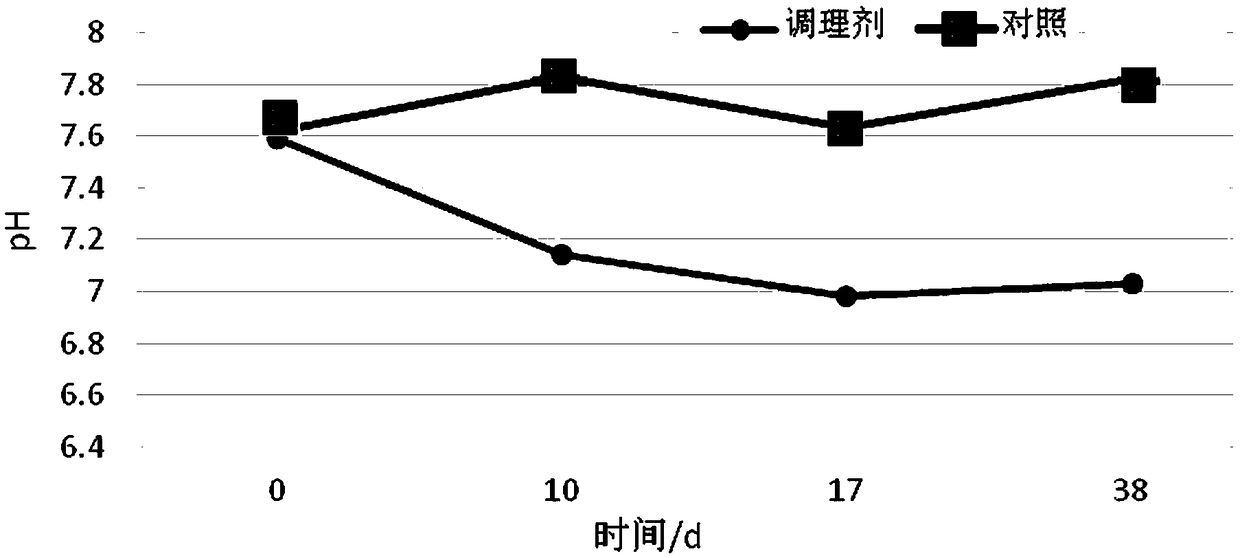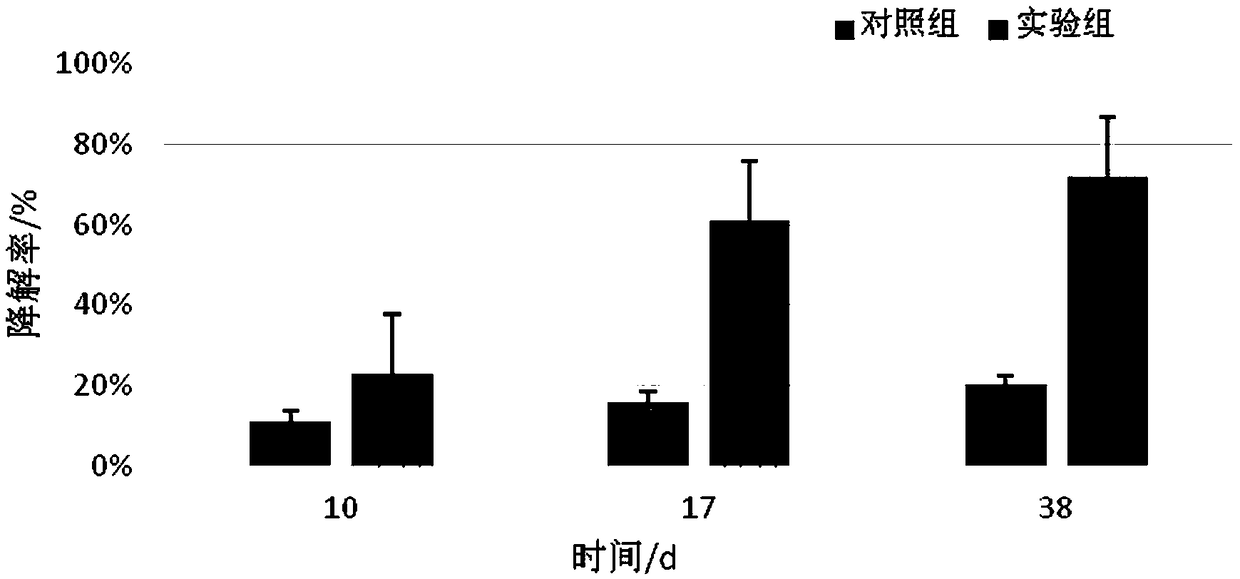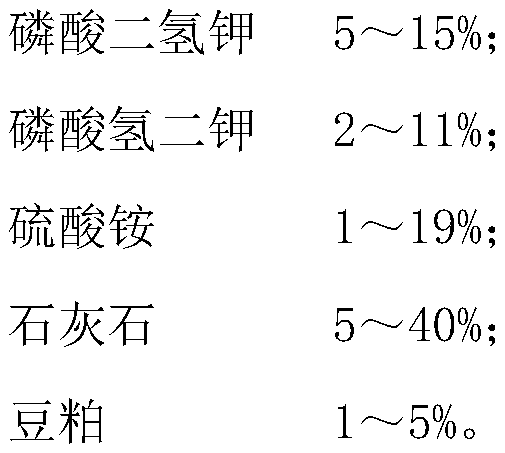Conditioner for remediating organic contaminated soil by utilizing microbes
A microbial remediation and organic pollution technology, which is applied in the field of conditioner for diesel-contaminated soil, can solve the problems of low soil efficiency, limit the application and impact of microbial remediation, and achieve the effect of alleviating compaction and improving compaction
- Summary
- Abstract
- Description
- Claims
- Application Information
AI Technical Summary
Problems solved by technology
Method used
Image
Examples
Embodiment 1
[0033] (1) A conditioner utilizing microorganisms to remediate organically polluted soil, containing microbial flora, organic amendments and culture medium, said microbial flora being Acinetobacter (Acinetobacter), Micrococcus (Micrococcus), Bacillus A combination of five species of genus Bacillus, pseudomonas and Achromobacter; the organic modifier is a combination of diatomaceous earth, plant ash, humus, straw, and sawdust; the The medium is a combination of potassium dihydrogen phosphate, dipotassium hydrogen phosphate, ammonium sulfate, limestone and soybean meal.
[0034] The mass percentage of described conditioner component is:
[0035] Microbial flora fermentation broth (OD=1.5) 5%;
[0036] 50% organic modifier, including: 20% diatomaceous earth, 10% plant ash, 10% humus, 5% straw, and 5% sawdust;
[0037] Medium 45%, including: potassium dihydrogen phosphate 12%, dipotassium hydrogen phosphate 8%, ammonium sulfate 19%, limestone 5%, soybean meal 1%.
[0038] (2) The...
Embodiment 2
[0044] (1) A conditioner utilizing microorganisms to remediate organically polluted soil, containing microbial flora, organic amendments and culture medium, said microbial flora being Actinomycetes (Actinomycetes), Pseudomonas (pseudomonas), The combination of Rhodococcus (Rhodococcus), Coryneforms (Coryneforms), and Candida (Candida); the organic amendment is a combination of diatomaceous earth, plant ash, humus, bagasse and sawdust; The medium contained monopotassium phosphate, dipotassium phosphate, ammonium sulfate, limestone and soybean meal.
[0045] The mass percentage of described conditioner component is:
[0046] Microbial flora fermentation broth (OD=2.0) 10%;
[0047] 45% organic modifier, including 15% diatomaceous earth, 15% plant ash, 7% humus, 5% bagasse, and 3% sawdust;
[0048] 45% medium, including 10% potassium dihydrogen phosphate, 5% dipotassium hydrogen phosphate, 13% ammonium sulfate, 15% limestone, and 2% soybean meal.
[0049] (2) The present inven...
Embodiment 3
[0052] (1) A conditioner that utilizes microorganisms to remediate organically polluted soil contains microbial flora, an organic amendment and a culture medium, and the microbial flora is Enterococcus faecalis (Enterococcus faecalis), Staphylococcus (Staphylococcus), yellow Bacillus (Flavobacterium), white rot fungi (write-rot fungi) four kinds of combinations; the organic amendment is a combination of diatomaceous earth, plant ash, biochar and sawdust; the medium contains potassium dihydrogen phosphate, phosphoric acid Dipotassium hydrogen, ammonium sulfate, limestone and soybean meal.
[0053] The mass percentage of described conditioner component is:
[0054] Microbial flora fermentation broth (OD=2.5) 15%;
[0055] 30% organic modifier, including 17% diatomaceous earth, 2% plant ash, 10% biochar, and 1% sawdust;
[0056] Medium 55%, including 8% potassium dihydrogen phosphate, 2% dipotassium hydrogen phosphate, 1% ammonium sulfate, 40% limestone, and 4% soybean meal.
...
PUM
 Login to View More
Login to View More Abstract
Description
Claims
Application Information
 Login to View More
Login to View More - R&D
- Intellectual Property
- Life Sciences
- Materials
- Tech Scout
- Unparalleled Data Quality
- Higher Quality Content
- 60% Fewer Hallucinations
Browse by: Latest US Patents, China's latest patents, Technical Efficacy Thesaurus, Application Domain, Technology Topic, Popular Technical Reports.
© 2025 PatSnap. All rights reserved.Legal|Privacy policy|Modern Slavery Act Transparency Statement|Sitemap|About US| Contact US: help@patsnap.com



